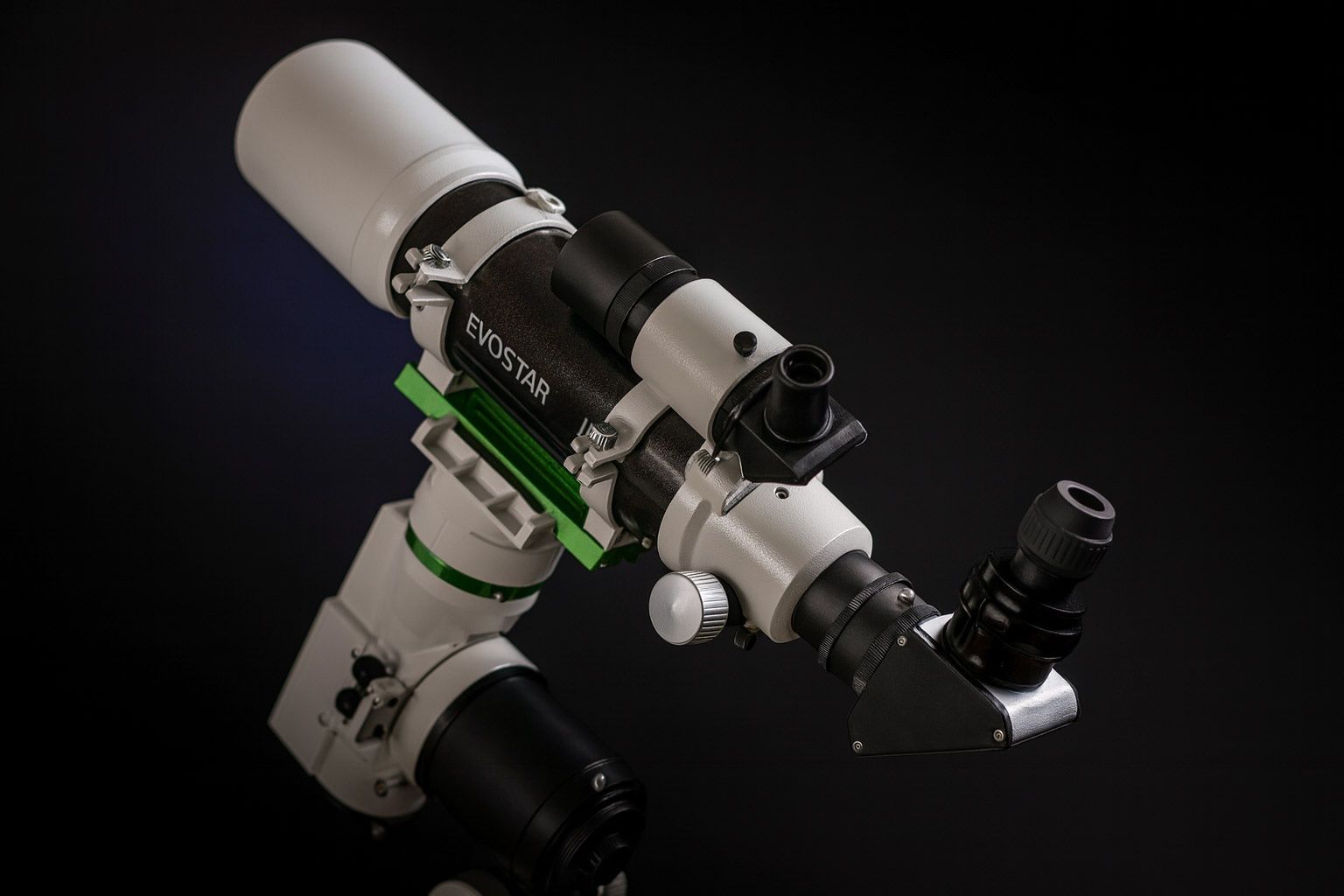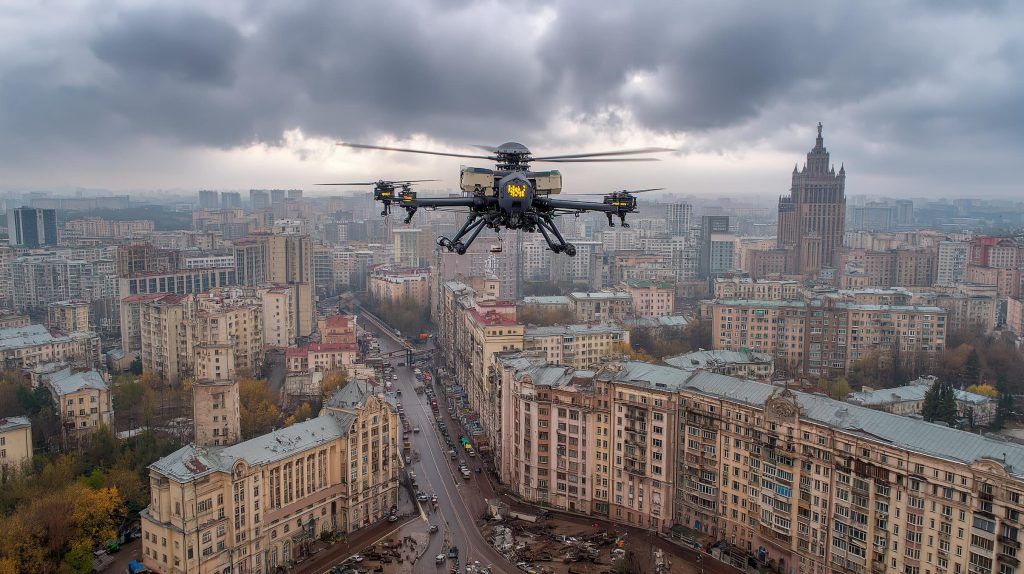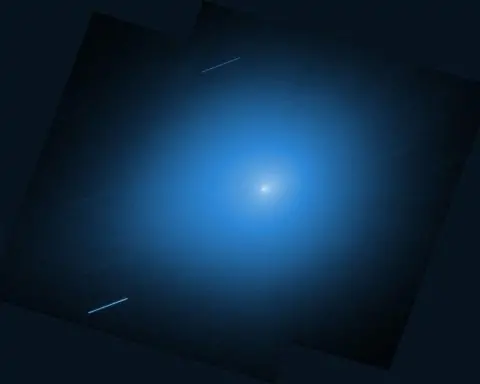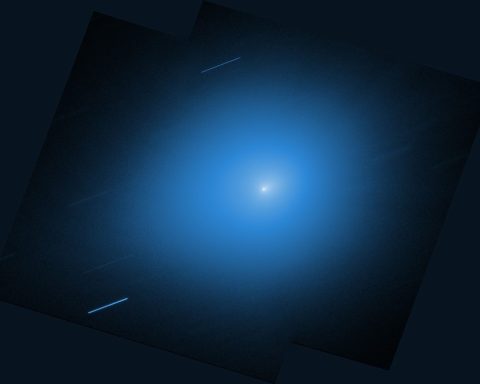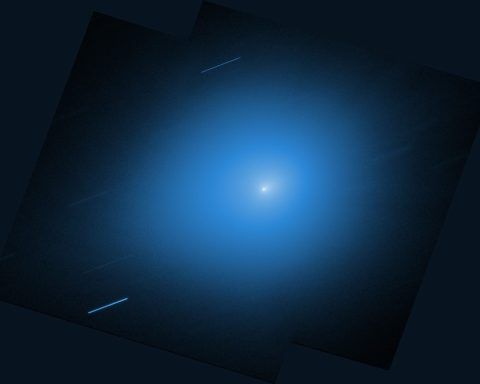- The Sky-Watcher Evostar 80ED is an 80 mm apochromatic doublet refractor using FPL-53 ED glass with 600 mm of focal length at f/7.5.
- The Evostar 80ED OTA weighs about 2.5 kg and is roughly 24 inches long with the dew shield, typically sold as an OTA with accessories rather than a full mount kit.
- The Skyliner 200P is an 8-inch (203 mm) Newtonian on a Dobsonian mount, with a 1200 mm focal length and a focal ratio of f/5.9.
- The 200P’s tube is about 112 cm long and weighs around 20 lb, with the base adding 20–25 lb for a total near 45 lb.
- The 200P includes a 2″ rack-and-pinion focuser, two eyepieces (usually 25 mm and 10 mm), and a 9×50 finder, and ships as a manual scope with no stock GoTo.
- The Star Adventurer 2i is a portable equatorial tracking mount with a 5 kg (11 lb) payload capacity and a mass of about 1.7 kg, using a 144-tooth worm gear with built-in Wi‑Fi control.
- It offers sidereal, lunar, and solar tracking modes, a polar scope, 4 AA battery or USB power options, and an autoguider port for future guiding.
- Pro Pack accessories for the 2i add a declination bracket, counterweight, and wedge, with US prices typically around $420–$480 and occasional sales as low as $269, while UK pricing sits near £349.
- The Star Adventurer GTi is the GoTo variant of the line, with dual-axis motors and Wi‑Fi control, weighing about 8.6 lb (3.9 kg) and selling for roughly $520, offering automatic slewing compared to the 2i’s manual operation.
- The Evolux 82ED is a newer 82 mm ED doublet (f/6.4, ~530 mm) that is lighter and shorter than the Evostar 80ED, but the Evostar 80ED remains favored for optical color performance thanks to its FPL-53 glass.
If you’re shopping for Sky-Watcher astronomy gear, three names will keep popping up: the Evostar 80ED, Skyliner 200P, and Star Adventurer 2i. These are all popular in their own right – one’s a refractor telescope, one’s a big reflector Dobsonian, and one’s a portable tracking mount – but they serve very different purposes. In this in-depth comparison, we’ll break down what each of these Sky-Watcher products is, their technical specs, ideal use cases, strengths and weaknesses, pricing and availability in 2025, expert opinions, and what real users are saying. By the end, you’ll know exactly which (or which combination) might be the best fit for your stargazing or astrophotography goals.
Sky-Watcher Evostar 80ED (80mm ED Refractor)
Overview & Classification: The Sky-Watcher Evostar 80ED is an 80 mm apochromatic doublet refractor telescope. “ED” stands for extra-low dispersion – it uses a two-element lens, including FPL-53 ED glass, to greatly reduce chromatic aberration (false color fringing). Essentially, this is a compact long focal length refractor (600 mm at f/7.5) known for delivering sharp, high-contrast views and images without the hefty price of a triplet APO. It’s often sold as an optical tube assembly (OTA) with accessories, not a full kit with mount – so you’ll need to mount it on an astronomy tripod or equatorial mount separately.
Technical Specs: With an 80 mm aperture and 600 mm focal length (f/7.5), the Evostar 80ED hits a sweet spot for wide-field viewing and imaging. It comes equipped with a 2-inch dual-speed Crayford focuser (smooth but not the most heavy-duty), a 90° star diagonal, 8×50 finderscope, and a pair of eyepieces (typically 20 mm and 5 mm) in the box. The OTA weighs around 5–6 lbs (~2.5 kg) and is about 24 inches long with the dew shield – fairly portable. The optics are fully multi-coated and internally baffled for high contrast. The result is tack-sharp stars and high contrast with virtually no false color on all but the brightest objects. In fact, reviewers note the Evostar’s color correction and image quality can beat some cheaper triplet refractors, all while being lighter and cooling down faster.
Use Cases & Best Applications: The 80ED is beloved as a dual-purpose telescope. It’s excellent for astrophotography (especially wide-field nebulae, galaxies, star clusters) and also a solid grab-and-go visual scope. Its 80 mm aperture is not huge for visual astronomy, so on planets you’ll see detail but not as much as larger scopes; however, the high-quality optics handle lunar and planetary viewing nicely up to ~150× magnification on steady nights. Where this scope shines is rich-field scanning of the Milky Way, viewing star clusters, and astrophotography: at 600 mm focal length you can frame many large deep-sky objects, and with a focal reducer/flattener (optional) you can even speed it up (to ~f/6) for shorter exposures. It’s very portable for travel to dark sites, and it doesn’t require a heavy mount – an EQ5-class GoTo or even a Star Adventurer-type tracker can carry it (with guiding recommended for long exposures). In short, the Evostar 80ED is ideal for the budding astro-imager or an observer needing a light, quick-to-deploy scope.
Strengths: The Evostar 80ED’s strengths lie in its optical excellence per dollar and versatility. You get excellent color correction and sharp optics for both visual and imaging use. It’s relatively lightweight and compact (no bulky tube or mirror), and it’s affordable compared to similar-quality apochromats. Owners often comment that this scope “just keeps delivering without issues” even after years of use [1]. It also includes many accessories that other brands charge extra for (like the case, diagonal, and finderscope). Industry experts frequently recommend the 80ED as one of the best bang-for-your-buck refractors. For example, one reviewer notes that the Sky-Watcher ED doublets (80/100/120 ED) have been considered “some of the best bargains in amateur astronomy” since their introduction [2]. Astrophotography veterans often praise the Evostar 80ED as an ideal first refractor that “really can’t be beaten” for the price. Zane Landers of TelescopicWatch calls it “an excellent choice, especially if you’re on a budget” and “for the price, it really can’t be beaten”, highly recommending it for both beginning imagers and experienced grab-and-go observers.
Weaknesses: No product is perfect – the Evostar’s few downsides mostly relate to its size and speed. 80 mm aperture isn’t a lot for strictly visual observing – faint deep-sky objects will appear dimmer than in a bigger telescope like the 200P. So while it’s great on wide star fields and brighter clusters, a small refractor won’t show you details in faint galaxies like an 8-inch can. Also, at f/7.5 it’s a bit “slow” for imaging by modern standards; many astrophotographers eventually invest in a focal reducer to bring it closer to f/6 or f/5.5, especially for large sensors. The included Crayford focuser, while dual-speed, can be a weak link – it’s smooth but may slip under very heavy camera loads and lacks some features (no compression ring, etc.). Serious imagers sometimes upgrade to a tougher focuser or add a motor focus. Lastly, you’ll likely want a field flattener for DSLR astrophotography to correct edge stars – that’s an extra accessory (not uncommon for refractors). But these weaknesses are relatively minor given the price point. As one reviewer put it, the 80ED’s focal ratio and aperture are a bit modest, “a little slow… and 80 mm isn’t a lot for visual”, but those are inherent trade-offs. Overall, there’s a reason this scope still gets 4.5+ star reviews consistently – its limitations are well known and outweighed by its strengths in quality and value.
Current Availability & Pricing (2025): The Evostar 80ED remains in production and widely available. Sky-Watcher sells it as the “ProED 80” package with all the accessories; in the US this package is listed around $1,080 new. Street prices may vary – in Europe or the UK, the OTA with accessories often goes for roughly £450–£550 (about $600–$700). Indeed, just a couple years ago one could find it closer to $750, but like many telescopes its price has crept up. Nonetheless, it’s still considered a tremendous value. As of 2025, retailers indicate the 80ED is “more on the way” when stock is low, so it’s not a discontinued model – you should have no trouble finding one from major vendors. And if $1k is a bit steep, keep in mind that includes the case, diagonal, and more. Occasionally, sales or used markets can bring the cost down; many amateurs pick up used 80EDs in good condition for under $600, making it an even better bargain. Bottom line: for about the cost of a mid-level DSLR, you can get a proven 80 mm apo refractor that will serve you for visual outings and astro-imaging for years to come.
Expert & User Opinions: The consensus on the Evostar 80ED is overwhelmingly positive. It’s often the top recommendation for a beginner astrophotography telescope. As astrophotographer Trevor Jones (“AstroBackyard”) notes, a portable tracking mount plus a small APO like the 80ED is a fantastic way to start capturing deep-sky images without much complexity [3]. Many advanced users keep an 80ED in their arsenal as a travel scope or quick-look instrument even after upgrading to larger scopes. On Cloudy Nights forums, owners have called the 80ED a scope that “revolutionized the market for entry-level ED refractors” [4] and “one of the best bargains” in astronomy gear [5]. They report that modern samples have very consistent, excellent optics, especially compared to early batches back in 2003 [6]. A veteran user on one forum summed it up: “the Sky-Watcher 80ED… just works. Nice color correction for a doublet – quite decent, if a bit of an old design” [7]. In other words, it may be a classic, but it’s tried-and-true. Overall, the Evostar 80ED has earned a reputation as a workhorse 3-inch refractor that punches above its weight in performance.
Sky-Watcher Skyliner 200P (8-inch Dobsonian Reflector)
Overview & Classification: The Skyliner 200P is an 8-inch Newtonian reflector on a Dobsonian mount – in plain terms, a big 203 mm mirror telescope in a simple, sturdy alt-azimuth base. Sky-Watcher’s “Skyliner” series refers to their classic Dobsonian models, and the 200P (sometimes called Classic 200P) is the 8″ aperture version. With its parabolic primary mirror and focal length ~1200 mm, this telescope is about f/5.9 in focal ratio. Dobsonians are famous for giving you the most aperture for your money, and the Skyliner 200P embodies that: it’s essentially a light-bucket for deep-sky viewing, but also quite capable on the Moon and planets. The base is a simple wooden rocker box with manual altitude and azimuth movement (no motors or electronics by default – just push the scope to aim). This is a pure visual observing instrument aimed at beginners and seasoned stargazers alike who want big, bright views without high cost or complexity.
Technical Specs: The 200P’s headline spec is its 203 mm (8″) primary mirror. A mirror this size gathers about 816× more light than the human eye, or roughly 2.5× as much light as a 5″ telescope – that means faint galaxies, nebulae, and star clusters leap into view compared to smaller scopes. The focal length is 1200 mm, giving an f/5.9 focal ratio, which is a nice compromise: fast enough to provide wide fields (a 2″ eyepiece can yield ~2° field of view) yet slow enough to keep optical aberrations like coma minimal. The telescope tube is about 112 cm (44″) long and around 9.3″ in diameter, made of steel, and weighs ~20 lbs (9 kg) on its own. The base adds another ~20–25 lbs (11 kg), so the whole setup is roughly 45 lbs (20 kg) total – hefty but still manageable for an adult in two pieces. The 200P comes with a 2″ rack-and-pinion focuser (with an adapter for 1.25″ eyepieces). Two eyepieces are included (usually a ~25 mm and ~10 mm “Super” Plössl giving 48× and 120×) plus a 9×50 finder scope. The mount has Sky-Watcher’s patented Tension Control Handles on the sides, which let you adjust friction or even lock the altitude motion – a nice feature to balance heavy eyepieces. You’ll need to collimate (align) the mirrors occasionally, which is standard for Newtonians. Overall, the build is robust and utilitarian. Sky-Watcher uses quality borosilicate glass for the mirrors (low thermal expansion) and coatings to ensure high reflectivity; the optical quality of these mass-produced mirrors is generally very good, often diffraction-limited out of the box.
Use Cases & Best Applications: An 8″ Dobsonian like the Skyliner 200P is widely regarded as one of the best all-around telescopes for visual astronomy. Here’s why: 8 inches of aperture will show you countless deep-sky objects under dark skies – hundreds of galaxies, nebulae, star clusters, many in pleasing detail that smaller scopes simply can’t reveal. Globular clusters begin to resolve into masses of stars; nebulae show structure, planetary nebulae pop out, and you can even spot the spiral arms of some galaxies in an 8″ scope under good conditions. It’s also terrific on the Moon and planets: you can see the cloud belts and Great Red Spot on Jupiter, the Cassini Division in Saturn’s rings, Mars’ polar cap (in season), countless lunar craters and mountain ranges, etc. With a suitable high-power eyepiece (and steady atmosphere), 200 mm of aperture supports up to ~400× magnification for planetary/lunar observing – though typically ~150×–200× is where the views are best. Essentially, this telescope can tackle planetary and deep-sky alike (TelescopicWatch scored it 5/5 for both Moon/planets and rich-field viewing).
The Skyliner 200P is best used for visual observing sessions in your backyard or at star parties. It’s a manual scope, so you star-hop or use star charts / apps to find targets (many find this enjoyable and educational). The Dobsonian mount makes it easy to move the scope intuitively – just push where you want to aim – and the motions are smooth enough to track objects by nudging. Because there’s no tracking, high-power observing (e.g. planets at 300×) will require frequent slight adjustments to keep the object in view, but no more than a gentle tap every few seconds. Many beginners start with an 8″ Dob because it’s simple to set up (no alignment procedure; you’re observing in minutes) and gives immediate “WOW” views of the heavens. It’s also a fantastic value for the performance: you’d need to spend several times more on an APO refractor (plus mount) to match what an 8″ mirror can show visually. On the flip side, this is not designed for deep-sky astrophotography – without an equatorial mount or tracking, long exposure imaging isn’t practical (though lunar/planetary imaging with a webcam is possible due to short exposures). Portability is middling: it’s not a travel scope you’d take on a plane, but it’s portable in a car as the tube and base separate. The tube length (~4 ft) might just fit across a back seat. For one person, carrying the components out to a backyard or nearby car is quite doable, but lugging it up many flights of stairs would be tough. In summary, the Skyliner 200P’s best application is maximizing your visual observing experience on a budget – it excels at giving newcomers and seasoned observers alike a thrilling tour of night-sky showpieces.
Strengths: The strengths of the 200P are all about aperture, simplicity, and value. You’re getting a large 8″ light bucket in a no-frills package – and that’s a winning formula that has made 8″ Dobs a perennial top recommendation. Key advantages include: Huge bang for your buck – one expert noted it used to be the “lowest price of all commercially available 8″ Dobsonians”, delivering big aperture at a bargain. (Even after some price increases, it’s still one of the most affordable 8″ scopes around.) It comes with everything needed to start observing immediately (mount, two eyepieces, finder) – no extra purchases required. Setup is a breeze: the base assembles in maybe 15–30 minutes initially, then the scope just sits in it. No alignment or power needed – you’re out observing planets or galaxies in no time, which is very beginner-friendly. The optics are excellent for the price; owners consistently report sharp images. In fact, the 8″ Sky-Watcher’s parabolic optics have no significant coma or aberration issues at f/5.9 – unlike faster f/4–f/5 Dobs, this one doesn’t really need a coma corrector. It also uses a solid tube, which helps collimation hold well and is less prone to dew than truss designs. The size is about the largest that is still manageable by one person – many users describe the 8″ as the “sweet spot” where you get a big jump in performance yet it “is not really any more cumbersome to transport or store than a typical 6″ Dob”. TelescopicWatch notes that at 8″, a solid tube is still comfortable to handle (whereas 10″+ solid tubes start to become unwieldy) [8]. Another strength: ease of use – you’re not wrestling with complicated electronics, so it’s very reliable. A Sky-Watcher rep or telescope guide might say, “Sometimes simple is best. An 8″ Dob lets you delve just as deeply into the universe as more pricey telescopes, at a surprisingly low price”. That sentiment is echoed by virtually everyone who’s looked through one: the views you get can be jaw-dropping for the money. It’s no wonder a popular astronomy saying is “the best beginner’s telescope is the one that gets used” – and an 8″ Dob gets used a lot because it’s so straightforward yet powerful.
To put it in perspective, one reviewer gave the Skyliner 200P high marks, saying it’s “still great for beginners and experienced users alike”. They liked that it’s a “large aperture [scope] without being too bulky” and highlighted it as the “cheapest 8″ Dobsonian available” in its class. Owners on forums often rave that purchasing an 8″ Dob was the best decision to truly see what’s out there – galaxies like Andromeda’s companions, the Whirlpool Galaxy’s spiral shape, the Orion Nebula’s filamentary details, etc., all become visible. In short, the Skyliner’s strength is delivering serious observing capabilities with minimal hassle.
Weaknesses: The Skyliner 200P’s weaknesses mostly stem from the flip side of its simplicity and size. First, while it is portable in pieces, the bulk and weight can be an obstacle for some people. The whole unit weighs ~45 lbs; the tube is a bit awkward to carry through doors (though a simple luggage cart or hand truck can help). If you live in a small apartment or need to transport the scope frequently in a compact car, an 8″ Dob may be less convenient – some users opt for a 6″ or a collapsible model in those cases. Another potential downside: no tracking or GoTo. By default this is a completely manual scope – finding and tracking objects relies on you. Some beginners might find this a learning curve, though many enjoy it. If you prefer a computerized experience, Sky-Watcher does offer GoTo versions (more on that later), but the classic 200P is intentionally low-tech. As a consequence, astrophotography is largely off the table with this mount – long exposures will blur without tracking, so this is not the scope to choose if your main goal is to photograph galaxies and nebulae (though it’s an amazing scope to observe those targets by eye). Also, being a Newtonian reflector, it requires collimation. The mirrors can get misaligned, especially after transport, and you’ll need to tweak them occasionally (using knobs on the mirror cells) to realign. This is not hard to learn (many tutorials exist), and tools like a collimation cap or laser help, but it’s a bit of maintenance not needed on refractors. Additionally, the Skyliner 200P comes with a straight-through 9×50 finder, which some find awkward to use near the zenith – many swap it for a right-angle finder or reflex sight for comfort. The focuser is a basic rack-and-pinion; it works, but as one reviewer pointed out, the stock adapter system for 1.25″ eyepieces is oddly implemented (thread-on rings) and not as convenient as it could be. It can also have trouble balancing if you add very heavy accessories, though the tension handle mitigates that. Lastly, storage of an 8″ tube requires a bit of space – about 4 feet tall standing in a corner.
Despite these caveats, most users agree the “issues” are minor in light of what you get. For example, a common refrain on forums is that an 8″ Dob is “a great starting point, as long as you’ll use it” – meaning the only bad thing would be if the size discouraged you from taking it out. One Reddit user noted that hauling a 8″ Dob in a taxi to dark sites could get tiring [9], implying if portability is a major concern, consider that. But if you have a convenient observing spot, the views through the 200P quickly make you forget the lugging effort. In summary, the weaknesses are lack of bells and whistles (manual operation) and some bulk – both inherent to the Dobsonian design. Many of these can be addressed (you can later add setting circles, or an equatorial platform for tracking, etc.), but out-of-the-box the 200P sticks to basics. And for many stargazers, that’s actually part of its charm.
Current Availability & Pricing (2025): The Sky-Watcher Skyliner 200P (Classic 8″ Dob) is readily available from multiple retailers worldwide. In the US, it typically retails around $600–$700 for the complete package. TelescopicWatch pointed out that post-COVID manufacturing costs pushed its price up to roughly $700, whereas it used to be cheaper. Indeed, at the time of writing, a major US retailer lists it on sale for about $629 (down from $725). In the UK, the same model (often called “Sky-Watcher 8-inch Classic Dobsonian”) has an RRP around £439, with street prices about £399 on sale [10]. We’ve even seen some European dealers as low as ~€430. This makes it still one of the most affordable 8″ telescopes on the market (for comparison, some competitors like the GSO-made Apertura AD8 or Orion XT8 may come with extra accessories but often cost slightly more). If $600–$700 is above your budget, consider that a 6″ Dobsonian is usually ~$100–$150 less – but many astronomy guides counsel that if you can stretch to the 8″, you won’t regret the extra aperture. The 200P is a long-standing model, so availability is generally good – it’s not a new or limited item. You might find it under different model numbers (Sky-Watcher’s SKU S11610 in the US) or even rebrands (Orion’s XT8 was historically similar, made by the same manufacturer Synta). As of 2025, there is healthy demand for 8″ Dobs, so they occasionally go out of stock after holiday sales, but Sky-Watcher continues to produce them. If you’re eyeing one, check multiple dealers or wait for a sale. And don’t forget the used market: Dobsonians are robust, so a well-cared-for used 200P can be a steal – often found around $400 or less, since some people upgrade to larger scopes over time. In conclusion, availability is strong and pricing remains very attractive for what you get. An 8″ scope like this often gets dubbed the “best beginner telescope” by experts for its mix of cost and capability [11] [12].
Expert & User Opinions: It’s hard to overstate how much the 8″ Dobsonian is loved in the amateur astronomy community. The Skyliner 200P, in particular, has garnered great reviews. TelescopicWatch gave it a 4.4/5 overall, praising its optics (5/5) and ease of use (5/5). In their review, they listed likes such as “fast setup time”, “large aperture without being too bulky”, and it being the “cheapest 8″ Dobsonian available” at the time. On Cloudy Nights and other forums, whenever a newcomer asks “What telescope should I start with?”, a chorus of experienced hobbyists often respond: “Get an 8-inch Dob!” This model (or its cousins) is usually the one they have in mind. Users talk about seeing the rings of Saturn for the first time, or the awe of pointing it at the Orion Nebula and witnessing the nebulosity fill the eyepiece – those moments spark a lifelong interest. One highly regarded astrophotography blogger even commented that “for the absolute beginner, an 8-inch Dobsonian… is your best bet. It’s the best entry point into astronomy.” [13] Even though he specializes in imaging, he recommends starting with the visual joy an 8″ provides.
The consensus from owners is that the Skyliner 200P over-delivers on expectations. They love the brightness and clarity of the views. Planets appear crisp (with proper cooling and collimation), deep-sky objects abound. Many say they “fell in love” with astronomy thanks to an 8″ Dob because it reveals so much. Of course, users note the practical issues too: collimation is a common discussion topic (most say it becomes routine quickly), and a few mention that upgrading the finder or adding a Telrad finder made navigating easier. Some also mention the stock 10 mm eyepiece is okay but a better high-power eyepiece (or a Barlow lens) really shows the scope’s potential. But these are minor tweaks. Overall, it’s clear the Skyliner 200P is viewed as a gateway to the universe. As one reviewer nicely put it, while fancier options exist, “none used to deliver the same 8″ aperture at the lowest possible price” as the Sky-Watcher Classic 200P. And nowadays, even if a competitor matches or beats it by a few dollars, the 200P remains a solid, time-tested choice. In summary, expert reviews and user experiences align in portraying the 200P as one of the finest beginner-to-intermediate telescopes available – a true modern classic in the telescope world.
Sky-Watcher Star Adventurer 2i (Portable Tracking Mount)
Overview & Classification: Shifting gears, the Star Adventurer 2i is not a telescope at all – it’s a portable equatorial tracking mount, also known as a star tracker. This device is essentially a compact motorized mount head designed to precisely rotate at the same rate as the Earth (sidereal rate), allowing cameras or small telescopes to take long-exposure photos of the night sky without star trailing. The “2i” is the second generation of Sky-Watcher’s popular Star Adventurer, with the “i” indicating built-in Wi-Fi control for use with a smartphone app. In form, the Star Adventurer 2i is a small unit (about the size of a large book, weighing ~3.6 lbs/1.7 kg) that you attach to a sturdy camera tripod. It has a removable wedge base for adjusting the latitude angle, a RA motor drive with various speed settings, and typically comes as part of a Pro Pack which includes a declination bracket, counterweight, and polar scope. This gadget is classified as a tracking mount for astrophotography – it’s extremely popular among photographers and amateur astronomers who want to capture wide-field images of the Milky Way, constellations, and even some deep-sky objects, all with a very portable setup. It can also do time-lapse panning shots. Think of the Star Adventurer 2i as an entry ticket into the world of astrophotography that’s far more compact and user-friendly than a full-blown telescope mount.
Technical Specs: Despite its small size, the Star Adventurer 2i boasts some impressive specs for a tracker. It has a payload capacity of 5 kg (11 lbs), meaning it can support a DSLR or mirrorless camera with a telephoto lens, or even a small telescope (e.g. up to an 80 mm refractor). This ~11 lb rating is among the best in class for portable trackers and is on par with its main competitor, the iOptron SkyGuider Pro [14] [15]. Inside, it uses a 144-tooth worm gear for smooth tracking and a DC servo motor. The tracking rates include sidereal, lunar, and solar speeds, and it also has 1/2x sidereal for time-lapse and other programmable modes. The 2i’s big new feature is Wi-Fi connectivity – you can control it via the Sky-Watcher app (for setting up time-lapse sequences, etc.) instead of just the manual dial. It still retains the physical mode dial and switches on the unit itself (one quirk: turning the dial to certain modes effectively turns the unit on, which has caused some accidental battery drain if it gets bumped in a bag) [16] [17]. Polar alignment is done through an illuminated polar scope built into the mount – it has a tiny reticle you align with Polaris or Sigma Octantis. However, notably, the Star Adventurer’s polar scope uses an external illuminator (a small LED piece you attach); this has been criticized as somewhat flimsy and easy to misplace [18] [19].
The device can be powered by 4× AA batteries (with an excellent runtime up to ~72 hours) or via an external 5V mini-USB power source [20]. The battery life is actually superb – several nights of tracking – but the AA system feels a bit old-fashioned, and users have reported issues like battery leakage if cells are left in for weeks [21] [22]. The mount includes an ST-4 autoguider port, a big plus if you want to do guided exposures (common on this kind of tracker for more advanced use). It has a standard Vixen-style dovetail saddle, so you can mount a small telescope or a camera L-bracket directly. The Pro Pack accessories allow mounting a camera in declination and balancing with a 1 kg counterweight – critical for heavier gear. The whole assembly is typically used with a tripod (3/8″ thread). When fully set up (wedge, RA head, Dec bracket, counterweight), it’s still very compact – many people fit the entire kit in a backpack. In short, technically the Star Adventurer 2i is a versatile mini equatorial mount with impressive tracking accuracy for its size (often allowing 2–5 minute exposures at 200–300 mm focal length unguided, if well aligned). It doesn’t have GoTo slewing or automatic object finding – it’s a motorized tracker, not a full GoTo mount – so you manually aim your camera or scope at the target, then let the Star Adventurer track it.
Use Cases & Best Applications: The Star Adventurer 2i is purpose-built for portable astrophotography. Its primary use case is for shooting wide-field night sky photos: think Milky Way panoramas, constellations, meteor shower backgrounds, comet wide shots, and large deep-sky objects like the Andromeda Galaxy or Orion Nebula with a telephoto lens. Astrophotographers love that they can get pinpoint stars on long exposures using this mount – typically it enables exposures of a few minutes with lenses up to around 200 mm, and with careful alignment (or autoguiding) you can push 300–400 mm focal lengths for maybe 1–2 minutes exposure each [23] [24]. For example, mounting a small 60–70 mm refractor (like a ZenithStar 61 or RedCat 51) is a common setup that the SA 2i can handle – it essentially becomes a mini telescope mount. It’s fantastic for travel: if you’re going to a dark-sky location or an eclipse, you can pack this tracker and a camera whereas bringing a full-size EQ mount would be impractical. It’s also great for those who hike to do nightscapes – though the head is ~1.7 kg plus counterweight ~1 kg, so it’s not ultralight backpacking gear, but many find it worth the weight for the capabilities.
Another application is time-lapse photography. The Star Adventurer can be set to rotate at slower speeds (e.g. 12× sidereal) to create a panning motion for time-lapse videos of the night sky. It even has a setting for long exposure timelapse where it moves between shots. Additionally, you can do panoramas and mosaics – e.g. a Milky Way mosaic by rotating the camera in RA between shots. For visual use, generally the Star Adventurer 2i is not meant for viewing through a telescope (it has no slow-motion controls in DEC unless you use the fine adjust of the Dec bracket manually). However, some folks do mount a small spotting scope or use it as a super-light grab-and-go tracking platform for visual observing at low power (like to track the Milky Way or a comet with a rich-field scope). Its strength is really in photographic use, though.
Beginners in astrophotography often start with a tracker like this because it’s simpler than a full mount – no alignment beyond polar needed, no heavy batteries (just AAs or a USB bank), and it’s relatively forgiving. You don’t necessarily need guiding or a laptop – a lot can be done with just the tracker and a camera with intervalometer. The Star Adventurer 2i, in particular, has become a community favorite due to its reliability and strong performance. For instance, users report doing up to 5-minute exposures at wide angles without trailing [25] [26]. If you try something like a 300 mm telephoto, you might get 1–2 min unguided, which is still great for many bright deep-sky targets. In summary, the ideal use cases for the SA 2i are nightscape astrophotography, lightweight deep-sky imaging, and creative time-lapses, especially when portability is key.
Strengths: The Star Adventurer 2i’s strengths are widely recognized in the astro community. Number one is portability + capability – it offers a very high payload capacity (5 kg) for its size [27]. This means you can use heavier cameras and longer lenses than most competing trackers allow. As one review put it, “this is one of the best payload capacities on the market” for a tracker of this class [28]. Despite the load it can carry, it remains extremely compact – travelers love that it fits in carry-on luggage or a backpack. Another strength: precise tracking. Numerous users have praised the Star Adventurer’s tracking accuracy; CapturetheAtlas notes “outstanding tracking performance” and calls it “a great tracker… one of the best star trackers on the market for a good reason” [29] [30]. The built-in polar scope (while not perfect) at least allows reasonably quick polar alignment, and you can achieve good accuracy with practice. The build quality of the mount is also lauded – mostly metal construction, secure knobs – it doesn’t feel like a toy. Trevor Jones (AstroBackyard) remarked that the Star Adventurer’s build and finish are “impressive” and that it’s solid and secure when assembled.
Another strength is its versatility. The SA 2i can handle a variety of configurations: dual camera setups, small telescopes, or just a DSLR on a ball-head. It has multiple speed modes, so one device can do astrophotography one night and time-lapse the next. The addition of Wi-Fi control in the 2i version is a bonus – you can program intervalometer functions and control the mount via your phone, which many find convenient (no need for an external intervalometer in some cases). The tracker also includes an autoguider port, which means as your skills grow, you can add a small guide scope and camera to improve tracking for longer focal lengths. Few other mini-mounts offer that. The community and support for the Star Adventurer are strong as well – being so popular, there are countless tutorials, videos, and forum threads full of tips for it. In essence, the Star Adventurer 2i is praised for being a beginner-friendly yet capable piece of kit. As AstroBackyard put it, affordable portable trackers like this are “a fantastic way to start [in astrophotography] because they are not overly complex and can provide promising results in a short period of time” [31]. It opens the door for many to capture their first galaxy or Milky Way image. And importantly, when it comes to the actual job of tracking the stars, the SA 2i “does an outstanding job”, remaining one of the top choices even in 2025 [32].
Weaknesses: While the Star Adventurer 2i is excellent, users have pointed out a few weaknesses and quirks. A commonly cited one is the polar scope illuminator – instead of an integrated LED, there’s a small external plug-in illuminator that many consider cheaply made and easy to break or lose [33] [34]. It can sometimes fall off or produce uneven lighting. Reviewers (and hopeful customers) have expressed that they “hope this gets improved in a future version” [35]. Another weakness is the battery system. Yes, the AA batteries give great longevity, but the mount lacks a simple on/off switch – it has that dial for modes, so it’s possible to accidentally leave it slightly on and drain the batteries [36] [37]. Also, using AA cells in 2025 feels dated; many would prefer a rechargeable internal battery. Some have had issues with battery leakage damaging the unit if they forget to remove batteries during storage [38]. A best practice is to use a USB power bank to avoid this. In short, power management on the SA 2i could be modernized.
Another limitation: while it handles quite a lot for its size, it’s still a small mount, so it’s not suitable for large telescopes or very long focal lengths. If you try to push it with an 8″ SCT or a 10 kg load, it’s obviously not going to work – but that’s outside its design scope anyway. More relevantly, even within its weight limit, wind or tripod instability can affect it since it’s a lightweight setup; you need a good sturdy tripod for best results. The DEC axis on the Star Adventurer doesn’t have a motor (it’s essentially free once you balance it, with only a manual fine adjust if you have the declination bracket). This means the mount can only auto-track in RA; if your polar alignment isn’t perfect, you might still see slight declination drift on long exposures, unless you autoguide. This is normal for trackers, but worth noting as a limitation compared to a full dual-axis mount. Some astrophotographers also mention that beyond ~300–400 mm focal length, using the Star Adventurer gets trickier – you have to be very precise with polar alignment and likely use autoguiding to get consistently round stars. So while it’s great up to a certain point, for serious long-focal work one would upgrade to an EQ5/HEQ5 class mount eventually.
Finally, the lack of GoTo means you manually frame your targets – for wide shots this is fine, but for something small like a specific nebula, it can take some trial and error to align the camera to just the right spot in a dark sky. This isn’t so much a flaw as an inherent trade-off of this kind of mount. Sky-Watcher addressed that in a newer model (the Star Adventurer GTi, discussed later) which adds GoTo but at cost of more weight/complexity. So, one could say the SA 2i’s simplicity is both a strength and a weakness: great for learning and portability, but eventually you may crave more automation. In summary, the main weaknesses of the Star Adventurer 2i identified by users are the flimsy polar scope illuminator, the inconvenient battery system, and the practical limits of its tracking ability when pushed to the edge. Yet, none of these are deal-breakers for most – they’re often seen as things to work around in an otherwise highly capable device. As one detailed 2025 review concluded: “Regardless of its flaws, the Star Adventurer 2i is still one of the best star trackers on the market… when it comes down to tracking, it does an outstanding job.” [39] That sums it up well: its core function – tracking the night sky – is top-notch, and the niggles are mostly about user convenience.
Current Availability & Pricing (2025): The Star Adventurer 2i (especially the Pro Pack) is widely available and continues to be a top seller in 2025. Pricing can vary depending on the configuration: the Pro Pack (which we highly recommend, as it includes the wedge, counterweight, and declination bracket – everything you need) has an MSRP around $420–$480 in the US. We’ve seen it listed at $420 on some sites, though oddly some retailers list higher prices (Agena Astro, for example, shows $585, which might have been an old price or a kit with extras) [40] [41]. It’s worth shopping around – at the time of writing, one reputable US dealer had it on sale for $269 (regular $349) [42], which is an excellent deal, possibly a clearance or temporary promotion. In the UK, the Star Adventurer 2i Pro typically goes for about £349 (including VAT) [43]. Europe prices are similar, around €399. The Photo Pack (which lacks the Dec bracket and counterweight) and Astro Pack (slightly different bundle) might be cheaper, but for serious use the Pro Pack is the one to get. Availability is good – it’s a current production model and very popular, so most astro retailers keep it in stock. In fact, the Star Adventurer 2i has been so successful that many retailers feature it in their “best astrophotography gear” sections. If you’re buying new, ensure you’re getting the 2i version with Wi-Fi (older stock of the first-gen Star Adventurer might still be around at lower prices, which is fine if you don’t need Wi-Fi – the core performance is similar). Also, note that Sky-Watcher introduced the Star Adventurer GTi (see next section) which is a more advanced, go-to mini mount – that one is pricier (~$520) and sometimes people confuse the two. The presence of the GTi hasn’t phased out the 2i; both are being sold concurrently for different user needs. So in 2025, you should have no trouble finding a Star Adventurer 2i from major outlets like B&H [44], High Point, First Light Optics, etc. Used market: trackers do come up used occasionally, often for ~$250, but they tend to hold value fairly well. Given the tech involved, many prefer to buy new for the warranty and support. In short, the SA 2i remains available and affordable, continuing to lower the barrier to entry for night sky photography.
Expert & User Opinions: The Star Adventurer series has almost a cult following among astrophotographers, and the 2i only strengthened that with its added features. Expert reviewers have been very positive: for instance, BBC Sky at Night Magazine gave the Star Adventurer Pro Pack 4 out of 5 stars in their review, highlighting its solid performance and reasonable price (they noted the £349 price and 5 kg payload specifically as big positives) [45]. Astrophotography blogs like CapturetheAtlas and AstroBackyard often include the Star Adventurer in their recommended gear lists. CapturetheAtlas’s 2025 buying guide calls it “one of the best standard camera star trackers on the market” and praises the sturdy equatorial base and high-quality feel [46]. They do acknowledge those annoyances like the illuminator and battery wheel, but even so, their verdict was that the SA 2i “is still one of the best star trackers in 2025” because its tracking performance is outstanding [47].
From the user community, feedback is also largely enthusiastic. Many amateur astrophotographers credit the Star Adventurer as the tool that enabled them to capture their first nebula or galaxy image. On forums like Cloudy Nights and Reddit, you’ll find countless threads of people sharing their images taken with a Star Adventurer – everything from wide panoramas of the Milky Way to quite deep shots of objects like the Orion Nebula, Rosette Nebula, Andromeda Galaxy, and more, all with modest lenses. Users often express pleasant surprise at what this little mount can do. For example, one user might report: “I managed 3-minute subs at 200 mm after careful polar alignment – stars were tight!” Another might caution, “be careful with the battery dial, I drained mine by accident in my bag,” echoing the known quirks. There is a strong consensus that the SA 2i is “a very capable mount” for what it is. Some very advanced users eventually outgrow it and move to bigger mounts, but many keep the Star Adventurer for when they need portability. It’s telling that even after the introduction of newer competitors and Sky-Watcher’s own GTi, the Star Adventurer 2i remains highly recommended as the go-to tracker for beginners and travelers. As one seasoned astro-imager wrote in a forum, “The Star Adventurer… is a mount that has enabled me to capture some beautiful astro landscape images and also photograph objects in the deep sky” [48].
There’s also a lot of community-driven improvement – for instance, 3D-printed parts to hold the polar illuminator better, or tips on balancing heavy setups. This kind of support network means new users of the SA 2i can easily find help and inspiration. In the broader context, the Star Adventurer 2i is often compared with the iOptron SkyGuider Pro; opinions vary, but many find the Star Adventurer a bit more user-friendly and feature-rich (while the SkyGuider’s internal battery and illuminated polar scope are nice – trade-offs!). All in all, the user review consensus is that the Star Adventurer 2i delivers on its promises. It makes astrophotography accessible, it’s reliable in the field, and any shortcomings are far outweighed by the convenience of having stars that stay pinpoint in your long exposures. The ability to shoot, for example, a 4-minute exposure of the Milky Way at ISO 800 with no trailing opens up a world of imaging that tripod-only photographers simply can’t reach. That’s why this little green-and-white mount has found its way into so many astrophotographers’ bags and hearts.
Upcoming and Rumored Sky-Watcher Models (and How They Compare)
Sky-Watcher hasn’t been standing still – there have been a few recent additions to their lineup that prospective buyers of the Evostar 80ED, Skyliner 200P, or Star Adventurer should know about. Let’s briefly look at what’s new or on the horizon as of 2025, and how those new offerings compare or impact the three products we’ve discussed.
Evostar 80ED vs New Refractors (Evolux Series): In recent years, Sky-Watcher introduced the Evolux ED doublet refractors (in 62 mm and 82 mm apertures) as more compact, faster telescopes for astrophotography. Notably, the Evolux 82ED is an 82 mm f/6.4 refractor (focal length 530 mm) that “builds on the legacy left by the Evostar range” [49]. It’s lighter (2.9 kg) and shorter (425 mm tube retracted) than the 80ED, making it a very portable grab-and-go scope [50] [51]. It also sports a new 2.4″ rack-and-pinion focuser (more robust than the older Crayford) [52]. However, optical glass choice matters: the Evostar 80ED uses FPL-53 ED glass, whereas the Evolux 82ED uses a different ED glass (likely FPL-51 or equivalent). Expert reviewers have noted that the classic Evostar still has the edge in color correction – “The Evostar 80ED has little in common with the smaller Evolux scopes in optical quality… it uses superior FPL-53 glass.”. Indeed, reports indicate the Evolux, while a solid performer, shows a bit more chromatic aberration on bright stars/planets and requires the dedicated field flattener for best results on full-frame sensors [53] [54]. The Evolux’s strengths are its compactness and modern features (e.g. the sliding dew shield, improved focuser), whereas the Evostar 80ED remains a slightly larger scope with slower optics but top-notch glass. In practice, for visual use the difference is minor, but for imaging, the Evostar might produce slightly cleaner color on bright objects, whereas the Evolux can give you a wider field out of the box. Price-wise, the Evolux 82ED is in the same ballpark or a bit higher (especially after adding the reducer/flattener). Some astrophotographers have noted that by the time you upgrade an Evolux, you could almost get into Sky-Watcher’s Esprit 80 triplet, which is a higher-end APO [55]. So how does this affect a potential Evostar 80ED buyer? If portability and fast focal ratio are your top priorities, the Evolux 82ED is tempting – it’s newer and sleek. But if you prioritize absolute optical performance (contrast and color correction) and don’t mind the slightly longer tube, the Evostar 80ED is still often considered the better optic [56]. Many experienced users continue to recommend the Evostar over the Evolux for those reasons (as one discussion bluntly put it: “The Sky-Watcher Evostar 80ED is better than the Evolux 82” in terms of optics [57]). In summary, there isn’t an “Evostar 80ED Mark II” yet; the Evolux is the closest thing to a successor, but it’s more of an alternative with its own trade-offs. Both remain available – Sky-Watcher is likely catering to different tastes (classic proven design vs newer compact design). If rumors are to be believed, we might see Sky-Watcher introduce more ED doublets or even a triplet in the ~80 mm range in the future, but as of 2025 the Evostar 80ED continues to be a mainstay, and its formula (FPL-53 doublet at f/7.5) hasn’t been directly supplanted by something clearly superior at the same price point.
Skyliner 200P and Dobsonian Innovations: The 8″ Classic Dobsonian design hasn’t changed fundamentally in decades – and that’s a testament to its effectiveness. However, Sky-Watcher has expanded the Skyliner line with variants like the FlexTube Collapsible Dobsonians and SynScan Go-To Dobsonians. For instance, there is a Skyliner 200P FlexTube SynScan model, which is an 8″ f/6 Dob with a collapsible tube and motors plus GoTo electronics (SynScan handset) for fully automatic pointing and tracking. This model effectively adds what many users might want down the line: tracking for visual convenience and the ability to more easily find objects with computer assistance. It’s priced around £800 in the UK (roughly $1000) [58], so about double the cost of the manual 200P. How does it compare? Optically it’s the same primary mirror, but the collapsible tube makes it shorter when stored (good for car transport). The GoTo and tracking make high-power observing more relaxed (no nudging to keep planets centered) and can even allow short exposure photography of bright objects (e.g. you could do some lunar shots, or live-stack some deep-sky with a camera for fun). The trade-offs: higher cost, heavier (motors and gear add weight), and you need a power source for the motors. Some purists also note that the manual simplicity (and lower weight) of the classic Dob has its own appeal. There are also third-party digital setting circle kits (like encoders with smartphone apps) that can be added to a classic Dob to help push-to locate objects. Another recent trend: smartphone integration. Competitor Celestron launched the StarSense Explorer Dobs (8″ and 10″) that use a phone to assist in finding objects. Sky-Watcher hasn’t announced a similar feature for the Skyliner series yet, but it wouldn’t be surprising if they explore app integration for Dobs in the future, given the popularity.
For now, if you are considering a Skyliner 200P and wondering about upcoming models: The design itself is mature; any “new model” will likely involve added tech or tweaks, not drastically different optics. A rumored area of development is perhaps ultra-light or tabletop Dobsonians in intermediate sizes, but 8″ is probably as large as you’d want in a tabletop format (and Sky-Watcher already has a 8″ FlexTube which is semi-tabletop). The bottom line is, the 200P isn’t going out of style – but if you think you may want GoTo or tracking, be aware that Sky-Watcher offers that in the SynScan version, or you might consider the competition (like Orion’s XT8g GoTo Dob or Celestron’s push-to models). These enhancements primarily affect convenience rather than the view; an 8″ mirror will show the same glorious night sky whether you push it manually or let motors move it. As one expert quipped, “you can delve just as deeply into the universe with an 8″ manual Dob as with an electronically controlled one” – the differences are about how you find and follow targets. Rumor-wise, there’s talk that Sky-Watcher may incorporate their FreedomFind encoder tech (used on some mounts) into Dobs, allowing manual movement without losing alignment in GoTo mode, but as of 2025 no official announcement of a new 8″ model with that feature. If you’re keen on astrophotography and love the idea of an 8″ reflector, Sky-Watcher does have imaging-specific Newtonians (the Quattro series, like an 8″ f/4 OTA), but those require hefty equatorial mounts – a completely different pathway than the Dobsonian.
Star Adventurer vs Star Adventurer GTi (New Mount): The most significant new “model” relevant to the Star Adventurer is actually Sky-Watcher’s Star Adventurer GTi, released around 2022. The GTi is essentially a mini GoTo equatorial mount that bridges the gap between a tracker and a full mount. It has dual-axis motors and GoTo via Wi-Fi (hence “GTi” – GoTo with built-in Wi-Fi, controllable by SynScan app). It shares the 11 lb payload capacity with the Star Adventurer 2i, but because it has both RA and DEC control, it can slew to targets and track them, and even do multi-star alignment like a larger GoTo mount. The GTi also comes with a built-in illuminated polar scope and is still quite portable, though it’s heavier (the RA/DEC head plus built-in wedge is about 8.6 lbs/3.9 kg). In effect, the Star Adventurer GTi offers more functionality (GoTo, computer control, automatic tracking in both axes, compatibility with apps like ASIAIR) at a higher cost and weight. If we compare the two: Star Adventurer 2i is simpler, lighter, and a bit cheaper (~$400 vs $520), ideal for those who prefer a manual approach and maximum portability. Star Adventurer GTi is for users who want GoTo convenience in the field – for example, it can automatically point a small scope or camera to, say, the Andromeda Galaxy once you’ve aligned it, rather than you manually aiming and searching. It also can be guided in both axes for longer exposures. Initial reviews of the GTi have been positive; users love the concept of a grab-and-go GoTo mount. However, it does add complexity (more to set up, more battery draw, etc.) and it’s not as backpack-friendly. Importantly, Sky-Watcher did not position the GTi as a replacement for the 2i, but as a step-up alternative – they’re selling both. Indeed, AstroBackyard mentions the SA GTi as an option “for those looking for even more capabilities” beyond the Star Adventurer 2i. So if you’re someone deciding between them, it comes down to whether you value the automated pointing and dual-axis tracking enough to justify the extra cost and size. Rumors for the future in this segment: one could imagine a Star Adventurer 3 with some improvements (perhaps addressing the 2i’s illuminator and power issues, maybe a slight payload boost or a more modern battery). But Sky-Watcher hasn’t announced anything like that yet. The current strategy appears to be keeping the 2i as the simple option and the GTi as the advanced option. It’s a bit like having a manual car vs an automatic – some will always prefer the simplicity and control of the former, while others love the convenience of the latter.
Beyond these specific comparisons, Sky-Watcher has been launching other new products: for example, at NEAF 2025 they unveiled their first Hydrogen-alpha solar telescope (HelioStar 76) [59] [60], and new mount lines (like the EQ-AL55i lightweight EQ mount and Wave series alt-az mounts) [61] [62]. These don’t directly replace any of the three products we covered, but they show the company’s direction: adding connectivity (the “i” in model names implies Wi-Fi/app control), catering to astrophotographers (fast astrographs like the new Honders Astrograph mentioned at NEAF), and filling gaps in their range (solar observing, etc.). For consumers, this means we can expect incremental improvements to beloved product lines rather than wholesale discontinuations. The Evostar ED refractors and classic Dobsonians are staples that likely aren’t going anywhere; instead, Sky-Watcher will supplement them with modernized versions or new accessories. If a “rumored new Sky-Watcher model” catches your eye, it might complement, rather than completely outclass, the older ones.
How Might They Compare? To succinctly answer: the upcoming or recently released Sky-Watcher models like the Evolux 82ED and Star Adventurer GTi offer enticing new features (portability and GoTo, respectively), but they do not necessarily make the Evostar 80ED or Star Adventurer 2i obsolete. In fact, many experts still favor the proven optics of the Evostar over the Evolux for pure image quality [63]. And many users still opt for the simpler Star Adventurer 2i for its ease of use, even though the GTi offers GoTo. As for the Skyliner 200P, its competition is more in the form of tech add-ons rather than fundamentally better 8″ telescopes – an 8″ mirror is an 8″ mirror. A GoTo Dob will help you find more objects, but it won’t show a galaxy any brighter than the same mirror on a manual base. So, if you’re eyeing a Skyliner now, you won’t suddenly find a radically better 8″ Dob next year – though you might see new features making their way into that category, like integrated digital setting circles or improved mounts.
In summary, Sky-Watcher’s new and rumored offerings provide exciting options, but each buyer should consider what matters for them. Want the lightest refractor? Check out Evolux, but remember the trusty 80ED still holds its ground for quality. Want an easier way to locate targets with your 8″? Maybe spring for the SynScan GoTo variant, or just add setting circles to the classic. Want a tracker with GoTo? The GTi is there, but the 2i remains a favorite for minimalists. The good news is, the ecosystem is growing – and whichever of these three products (or combination) you choose, you’ll be joining a community of users that have lots of experience and advice to share. Keep an eye on Sky-Watcher’s announcements (their 2024 “State of Sky-Watcher” webcast hinted at more integrations and products to come [64]), but rest assured that the Evostar 80ED, Skyliner 200P, and Star Adventurer 2i are still top choices in 2025 and will likely continue to be supported and beloved for years to come.
Conclusion: Which One is Right for You?
By now, it’s clear that the Evostar 80ED, Skyliner 200P, and Star Adventurer 2i each excel in different arenas. There’s no outright “winner” – instead, think of it as choosing the right tool for the job (and possibly using more than one in tandem!). To decide, consider your priorities:
- If you primarily want to observe the night sky (planets, galaxies, nebulae) with your eyes and get the most wow for your money, the Skyliner 200P Dobsonian is hard to beat. It’s the classic beginner-to-intermediate telescope that can keep you happy for a lifetime of visual astronomy. You’ll see more detail in faint deep-sky objects and planets with the 8″ Dob than with the 80 mm refractor. It’s bulkier to store and move, but once set up, it’s intuitive and immersive. As one expert said, an 8″ Dob makes you an active participant in finding objects and gives an excitement of discovery that is unique. If you don’t mind the manual aspect and can handle the size, this scope will provide countless “oh wow!” moments under the stars.
- If you want a telescope that can do double-duty for visual and astrophotography, or you need something highly portable, the Evostar 80ED refractor is a fantastic choice. It won’t show faint objects as brightly as the 8″ Dob, but its pinpoint stars, crisp optics, and compact form are perfect for astrophotography and grab-and-go observing. It’s essentially an entry into the world of high-quality refractors without breaking the bank. Many astrophotographers started with an 80ED on a modest mount and produced stunning images. And as a travel scope or quick setup for a moon or planet look, it’s extremely convenient. If you have a decent photo tripod or eventually invest in an equatorial mount, the 80ED can grow with you. It’s a scope you can use on a light alt-az for casual viewing or on an HEQ5 for serious imaging – truly versatile.
- If your main goal is photographing the night sky (and you already have a camera), or you need an ultra-portable setup for imaging and don’t necessarily need a telescope for visual use, then the Star Adventurer 2i might be your best friend. For a relatively low cost, it unlocks the ability to capture the Milky Way core rising above the horizon in a single exposure, or to create a time-lapse of stars wheeling overhead, or to even image a galaxy with a telephoto lens. It’s the smallest, lightest option of these three – you can toss it in a backpack and hike to a dark site. Keep in mind, the Star Adventurer is a mount only – you’d be pairing it with a DSLR/mirrorless and lenses, or a small scope like the Evostar 80ED (indeed, the 80ED + Star Adventurer is a known combo for a beginner astro-imager, though it approaches the mount’s limits). If you don’t have any optical tube yet and your interest is more in viewing than photography, the Star Adventurer alone won’t do much – it’s for imaging. But if you’re primarily interested in capturing the sky with a camera, it’s a brilliant first step that many experts commend as the way they got started.
For some enthusiasts, the ideal setup might be a combination: For example, owning both a Dobsonian for visual fun and a small refractor + tracker for imaging covers a lot of bases. It’s not uncommon to see people have an 8″ or 10″ Dob at home and also a portable refractor imaging rig. If budget constraints mean you must pick one path now, consider where your passion lies: observing or photographing? Planets or deep-sky? Home use or travel? Each of the three options we discussed targets a slightly different niche of the astronomy hobby.
A Quick Recap (and SEO-friendly summary 😄):
- Sky-Watcher Evostar 80ED – 80 mm apo refractor. Best for astrophotography beginners and those wanting a high-quality, portable telescope for both visual and imaging. Strengths: superb optics with almost no false color, lightweight, and a complete package included. Weaknesses: limited aperture for visual, needs a mount. Rough price: $~$1000 new. Loved by experts (“highly recommend it… can’t be beaten for the price”) and users (“one of the best bargains in amateur astronomy” [65]).
- Sky-Watcher Skyliner 200P (8″ Dobsonian) – 203 mm reflector on manual Dob mount. Best for visual observing – from the Moon to nebulae, it shows you a bit of everything with great brightness. Strengths: huge aperture for cost, simple operation, all-inclusive kit. Weaknesses: bulky, no tracking or GoTo by default. Price: $~$600 (still among the cheapest 8″ scopes). Widely hailed as the top choice for a first “serious” telescope, providing views that truly impress (many call it the “sweet spot” for beginners).
- Sky-Watcher Star Adventurer 2i – Ultra-portable star tracker mount. Best for wide-field astrophotography and nightscapes, and for photographers on-the-go. Strengths: extremely portable, high payload for its size (5 kg) [66], excellent tracking accuracy, versatile (multiple modes). Weaknesses: no GoTo (manual pointing), uses AA batteries (watch out for the quirky power dial). Price: $~$300–$400 for Pro Pack (great value to start capturing the cosmos) [67]. It’s considered “one of the best star trackers on the market” in 2025 [68], often recommended as a first mount for budding astrophotographers.
In conclusion, each of these Sky-Watcher offerings is a winner in its category. The Evostar 80ED, Skyliner 200P, and Star Adventurer 2i aren’t really direct competitors to each other – rather, they complement each other. A true astronomy buff could justify owning all three! But even one of them can open up a whole new universe for you. If you choose the one that aligns with your interests, you’ll likely join the chorus of happy users singing its praises on forums and review sites. As you’ve seen from the quotes and sources we cited, these products have stood the test of time and earned respect from the community: the 80ED for its optics, the 200P for its views, and the Star Adventurer for its innovation in portability.
SEO Note: No matter which you pick, remember to get out under the stars and use it. The best telescope (or mount) is the one that you’ll use frequently. Clear skies and happy observing (or imaging)!
Sources:
- Sky-Watcher Evostar 80ED specs and expert review
- TelescopicWatch – Zane Landers on Evostar 80ED (pros/cons and recommendation)
- Cloudy Nights forum – user commentary on 80ED as a long-standing top value [69]
- Sky-Watcher Skyliner 200P specs (Sky-Watcher/HighPoint)
- TelescopicWatch – 8″ Dobsonian review (likes: “cheapest 8″ Dob” etc.)
- High Point Scientific – details on Skyliner 200P features and weight
- Reddit/Community – consensus on 8″ Dobs being ideal beginner scopes [70]
- Sky-Watcher Star Adventurer 2i specs (AstroBackyard/Manufacturer)
- CapturetheAtlas – Star Adventurer 2i review (payload, battery life, pros/cons) [71] [72] [73]
- CapturetheAtlas 2025 Tracker Guide – SA 2i strengths and flaws [74] [75]
- AstroBackyard – insights on using Star Adventurer (practical choice in 2024) [76]
- BBC Sky at Night – Evolux 82ED overview (context vs Evostar) [77] [78]
- Reddit/Cloudy Nights – discussions comparing Evolux 82 to Evostar 80 (optics) [79] [80]
- Sky-Watcher NEAF 2025 announcements – new products like GTi, solar scope [81] [82]
- Star Adventurer GTi info – AstroBackyard mention and spec comparison
- CapturetheAtlas – quote on Star Adventurer being one of the best in 2025 [83]
References
1. www.astronomo.org, 2. www.cloudynights.com, 3. astrobackyard.com, 4. www.cloudynights.com, 5. www.cloudynights.com, 6. www.cloudynights.com, 7. www.cloudynights.com, 8. telescopicwatch.com, 9. stargazerslounge.com, 10. www.wexphotovideo.com, 11. medium.com, 12. astrobackyard.com, 13. astrobackyard.com, 14. capturetheatlas.com, 15. capturetheatlas.com, 16. capturetheatlas.com, 17. capturetheatlas.com, 18. capturetheatlas.com, 19. capturetheatlas.com, 20. capturetheatlas.com, 21. capturetheatlas.com, 22. capturetheatlas.com, 23. capturetheatlas.com, 24. capturetheatlas.com, 25. capturetheatlas.com, 26. capturetheatlas.com, 27. capturetheatlas.com, 28. capturetheatlas.com, 29. capturetheatlas.com, 30. capturetheatlas.com, 31. astrobackyard.com, 32. capturetheatlas.com, 33. capturetheatlas.com, 34. capturetheatlas.com, 35. capturetheatlas.com, 36. capturetheatlas.com, 37. capturetheatlas.com, 38. capturetheatlas.com, 39. capturetheatlas.com, 40. agenaastro.com, 41. milehighastro.com, 42. milehighastro.com, 43. www.skyatnightmagazine.com, 44. www.reddit.com, 45. www.skyatnightmagazine.com, 46. capturetheatlas.com, 47. capturetheatlas.com, 48. www.stevenrobinsonpictures.com, 49. www.skyatnightmagazine.com, 50. www.skyatnightmagazine.com, 51. www.skyatnightmagazine.com, 52. www.skyatnightmagazine.com, 53. www.skyatnightmagazine.com, 54. www.skyatnightmagazine.com, 55. www.iceinspace.com.au, 56. www.reddit.com, 57. www.cloudynights.com, 58. stargazerslounge.com, 59. www.skywatcherusa.com, 60. www.skywatcherusa.com, 61. www.skywatcherusa.com, 62. www.skywatcherusa.com, 63. www.reddit.com, 64. www.youtube.com, 65. www.cloudynights.com, 66. capturetheatlas.com, 67. milehighastro.com, 68. capturetheatlas.com, 69. www.cloudynights.com, 70. astrobackyard.com, 71. capturetheatlas.com, 72. capturetheatlas.com, 73. capturetheatlas.com, 74. capturetheatlas.com, 75. capturetheatlas.com, 76. astrobackyard.com, 77. www.skyatnightmagazine.com, 78. www.skyatnightmagazine.com, 79. www.reddit.com, 80. www.cloudynights.com, 81. www.skywatcherusa.com, 82. www.skywatcherusa.com, 83. capturetheatlas.com
